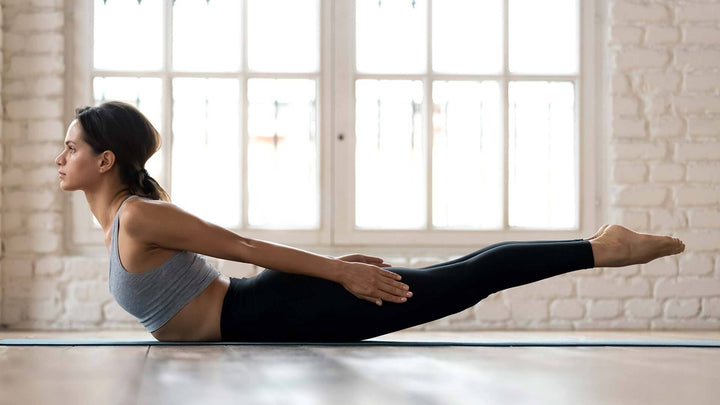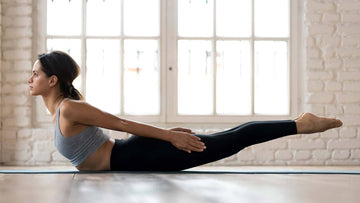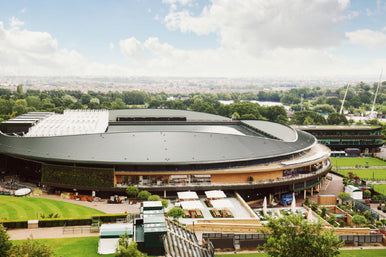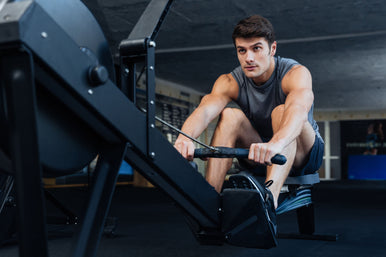

Pilates is often recommended as a great addition to any workout regime, but what does it involve? Is it really the same as Yoga? Pilates and Yoga often get grouped together but they actually offer two very different sets of benefits.
Here we explore the ins and outs of this beneficial practice, including how you can incorporate it into your routine, from today.
The history of Pilates
Don’t worry we will keep this short and sweet- but it is interesting to learn about the context Pilates originated from.
Joseph Pilates, the forefather of all the current styles of Pilates available, first designed a series of movements with the aim of rehabilitating wounded or injured soldiers during the first world war. These movements were inspired from movements as diverse as gymnastics and martial arts, creating a truly comprehensive selection of exercises with multiple benefits.
He also developed a machine to enhance the benefits of these movements- a pully system created resistance which increased muscle strength and improved rehabilitation. This machine evolved into the modern-day reformer you see in many Pilates studios today.
What does Pilates involve?
Pilates involves different aspects, but the underpinning foundation is its emphasis on good posture, alignment, and core strength.
In Pilates, the core is referred to as the ‘powerhouse’ from which all other forms of movement originate from.
We can think of our core muscles- comprising our deep transverse abdominals and our obliques, as the stabilisers which support the healthy movement of our hips, legs and back.
A healthy core is much more than just ascetically pleasing- it can improve our ability to walk, run, play spots, sit, stand and much more. It helps to facilitate the functional movements which we utilise in daily life.
Who can benefit?
Pilates can be an effective exercise in its own right, or a great addition to say running or cycling. Pilates can be tailored for al different abilities and ages, as a preventative for or treatment of injury/other pathologies.
It can even be used in the run up to giving birth as a way to encourage a healthy natural birth, as well as postnatally to repair weakened abdominal muscles.
As a beginner your teacher will focus on establishing a neutral pelvis, accurately recruiting the deep abdominal muscles, and progressively building core strength. But you will also be taught a series of stretches and strengthening exercises which can improve flexibility, circulation, and general health.
Whilst the practice of Pilates doesn’t involve the same level of mindful awareness you might expect from a yoga class- the involvement of synchronised breathing can help to focus the mind in the present moment, making it good for stress.
Mat or reformer: which is best?
It doesn’t need to be an either-or situation. Perhaps you choose to start with the basics via mat Pilates, which actually can be ‘harder’ but is less technical than using the machines, before progressing onto the reformer.
On the other hand, if you have injuries or want to rehab the reformer can be a very comprehensive tool in your recovery- especially if you opt for a few one-to-one sessions with a injury aware teacher.
Practically though, if you just want to get going- there are a lot of online classes which can ease you into the basics- just aim to find a suitably qualified teacher: respected certifications include Body Balance and BASI.
Key Pilates moves
To give you an idea of the type of movements you can expect from a well rounded Pilates class, below we break down five exercises you can expect to find as well as what benefits they have for the body:
1. The hundred
In the hundred you lie on back with your arms along side your body. With your core activated you lift your legs and head, whilst pumping your arms up and down repeatedly in line with the breath. This movement may look easy, but don’t be fooled as it is actually quite an advanced position and requires a strong activation of your deep transverse abdominal muscles. Luckily as a beginner you will build up to this posture in stages so don’t be alarmed if it doesn’t come easily at first.
2. Back extension
As well as working the core, Pilates also works to lengthen and strengthen the shoulders and the lower back. This exercise is great for the prevention of lower back pain and helps to counteract all our daily sitting. Here, you will lie on your front and stretch you arms out in front. As you lift your chest your arms will raise and your lower legs will also hover off the floor. This has the benefit of stretching the body as well as activating core muscles around the back.
3. Front support
Another description of this posture would be ‘the plank’, where you create a straight line from your ankles to your shoulders, aiming to keep your weight over your wrist. This position builds upper body strength, engages the core, and acts a foundation for other key Pilates movements
4. Shoulder bridge
Here you will activate your glute muscles, which can be weak and inactive through long hours of sitting. Lying on your back with your pelvis in neutral you will bend your knees, bring the soles of your feet to the floor and elevate your hips. Once again, the posture has many benefits as it also works your core, back and opens the front of your hips.
5. Open v rocker
This one can take a little practice but is great for core strength, hamstring length and the lower back. Sitting on the floor you will lift your legs up straight and take hold of the ankles. Once your core is engaged you will rock back onto your spine before lifting up again. The aim is to maintain the same distance between your thighs and your stomach as you move. Again, this can be built up step by step as you progress.
Key takeaways:
- Whilst similar to yoga, Pilates is more focused on core strength, and physical posture/ stability
- Pilates can be practiced on a mat or via a reformer- which adds resistance and is good for injury rehab
- Pilates can be adjusted for injuries/ pregnancy and is a great complement to sports, exercise and sitting


